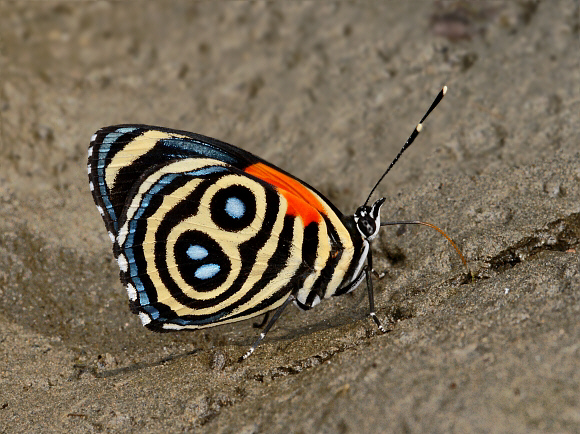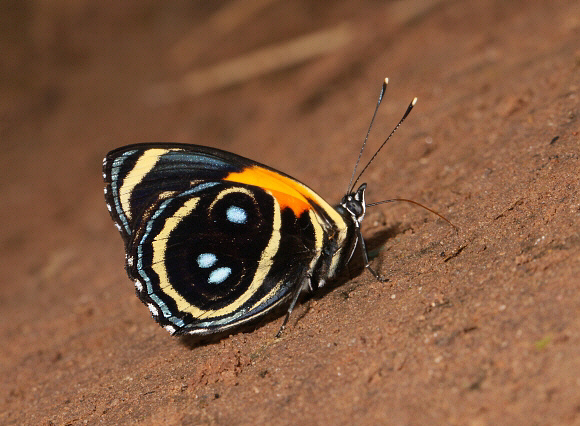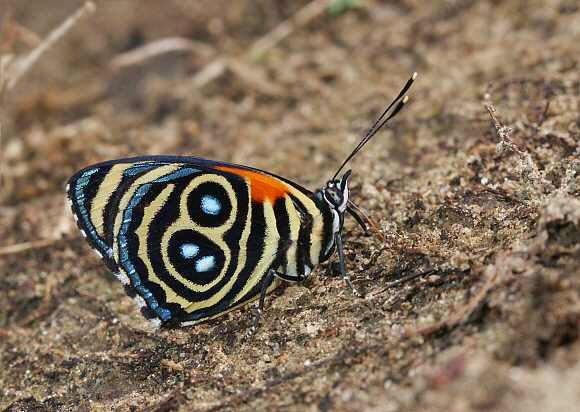 Callicore eunomia, Pantiacolla, Rio Alto Madre de Dios, Peru – Adrian Hoskins
Callicore eunomia, Pantiacolla, Rio Alto Madre de Dios, Peru – Adrian Hoskins
Introduction
There are about 20 species in the genus Callicore, all of which bear distinctive and graphic patterns on the underside hindwings, often resembling numbers or letters of the alphabet. The uppersides of all species are blackish, marked on the forewings with bright red or orange bands. The hindwings of several species also have red or orange markings but in most species they are plain black, with a very reflective brilliant blue sheen.
Unfortunately these beautiful butterflies are killed in vast numbers for their wings which are used by the souvenir trade for the production of decorated plates, jewellery, place mats and other trivia.
In eunomia the basal half of the upperside forewings is bright orange, and there is a white spot in the apical area. The hindwings are dark brown, with blue scaling near the tornus.
Callicore eunomia is found in the upper Amazonian region from Colombia to Guiana and south to Brazil, Peru and Bolivia. There is a rare form found in central Peru, in which the black markings on the underside are greatly enlarged – this variety is known as ab. confluens, as illustrated below.
 Callicore eunomia, male, ab. confluens, Satipo, Peru – Adrian Hoskins
Callicore eunomia, male, ab. confluens, Satipo, Peru – Adrian Hoskins
Habitats
Tropical rainforest and cloudforest at elevations between about 200-1600m. In common with other members of the genus, this species is frequently found close to habitations.
Lifecycle
I have no information specific to eunomia. In most Callicore species the eggs are white, and are laid singly on Serjania, Allophylus or other Sapindaceae.
 Callicore eunomia, Rio Pindayo, Peru – Adrian Hoskins
Callicore eunomia, Rio Pindayo, Peru – Adrian Hoskins
Adult behaviour
The butterflies are usually encountered as solitary individuals. They have a rapid and powerful flight over short distances, and often settle on boats, jetties, or on the walls of wooden buildings.
Males often visit sandbanks to imbibe dissolved minerals from urine-soaked ground, and habitually settle on the arms and legs of humans to imbibe sweat. They also feed at rotting fruit, but are not known to visit flowers.
